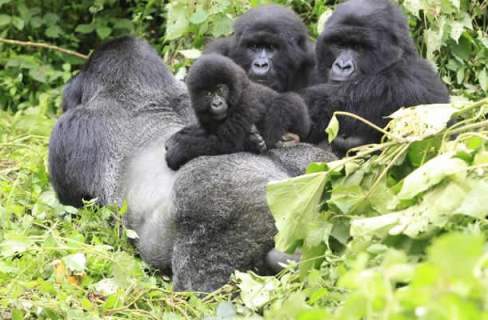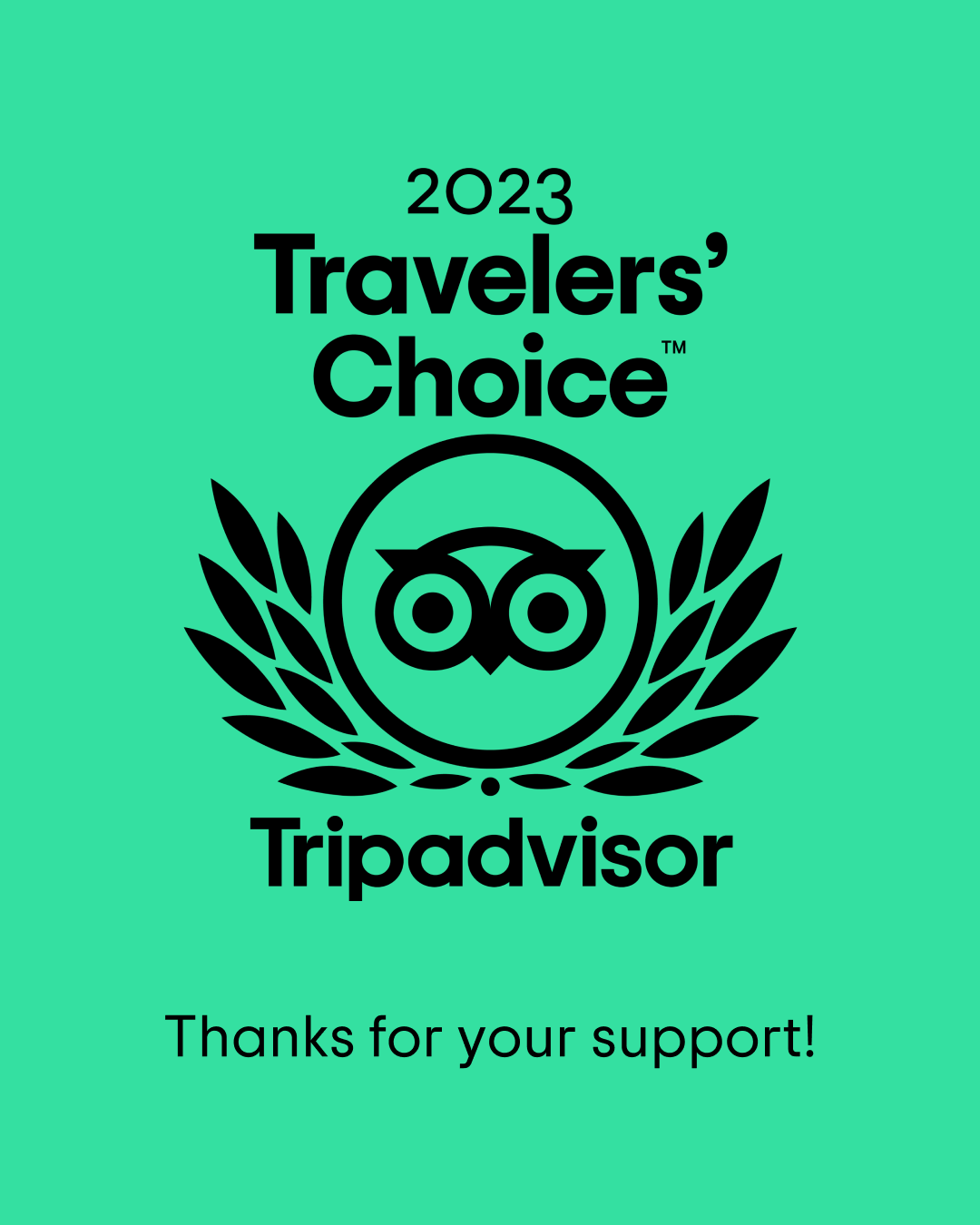Mountain Gorilla Trekking Guidelines Advice and Tips
 Practical Mountain Gorilla Trekking Guidelines, Advice, and Tips for Your Unforgettable 1-Hour Encounter
Practical Mountain Gorilla Trekking Guidelines, Advice, and Tips for Your Unforgettable 1-Hour Encounter
Book Your Gorilla Permit Early Enough
Start planning your Mountain Gorilla Trek by securing a Gorilla Tracking Permit well in advance. Due to their popularity, we recommend booking your permit at least six months early, especially for treks between June and September. In Uganda, permits are 700 USD per person – Feb 2022 and 800 USD after June 30th, 2024, for foreign non-residents. For booking details, please see our permit guide.
Experience the Thrill of a Lifetime
Trekking to see the Mountain Gorillas is a breathtaking experience, often a highlight for travelers in Uganda. Coming close to these majestic creatures, our closest relatives, is an indescribable thrill.
Discover the Rare Mountain Gorillas
Mountain Gorillas are critically endangered, with only about 1063 left worldwide (as of May-Nov 2018). Uganda’s Bwindi Impenetrable National Park is home to nearly half of them. You’ll also find them in the Virunga massif, which spans Uganda’s Mgahinga Gorilla National Park, Rwanda’s Volcanoes National Park, and the Virunga National Park in the DR Congo.
Embark on an Exhilarating Journey
The Ugandan Wildlife Authority reports a 95% chance of encountering Gorillas during your trek. Your adventure will take you through dense jungles, bamboo thickets, past local homes, and up forested hills. Trek durations vary, lasting from 2 to 7 hours. Your effort pays off the moment you first spot the Gorillas, a memorable encounter with nature’s gentle giants.
Prepare for Your Trek
Apart from securing your permit, prepare for your trek at home. Choose the right gear, appropriate footwear, and clothing for your safari. Enjoy every moment with the Gorilla Family, and remember to pack essential items for your trek.
Your Gorilla Trekking Gear
Gorilla Tracking Safari Clothing: – mountain gorillas live considerably higher up, cooler in the mornings, and often there is a mist. When considering what to wear during the gorilla trek, it is better to have environmentally friendly clothes. Let’s take a quick look at your Mountain gorilla trekking gear;
• Daypack: Preferably a waterproof daypack, you can use it as a carry-on flying to Uganda. Pack all essentials inside the daypack.
• Hiking Boots: Make sure that they have good tread. You will need ankle support, which boots provide. They also help you react to muddy trails. Have a good pair of merino wool socks.
• Long Trouser: They will protect you from nettles and thorns. Tuck the trousers into your socks for added protection from ants.
• Long-sleeved shirt: Neutral in color. Again, this is for your comfort and protection.
• Rain Jacket or Poncho: Pack into your daypack. You never know when it will train. You are in an Afro-montane Rainforest.
• Tough Gardening Gloves: This is to protect your hands from thorns, nettles, and sharp branches.
• Wide Brimmed Hat: It gives you protection from the Sun.
• Camera Equipment – Binoculars: Ensure extra batteries and storage devices. Put them into Ziploc bags. Binoculars are not needed if you are not a birder.
• Packed Lunch and Bottled Water: You will need your packed lunch from the Lodge and two liters of bottled water.
• Insect Repellent – Sun Lotion – Sunglasses: We recommend the effective Australian RID Insect Repellent. Good Sun blocker cream and sunglasses.
• You will need a Porter and Walking Stick: The services of a porter free you on the often-difficult trail, and a local walking stick helps you and steadies you on the often-challenging path. We supply our clients with both.
Read more about packing for your safari on our dedicated page.
Preparing for Your Gorilla Trek Adventure
- Attend the Briefing Carefully Before you start your trek, you’ll receive a briefing on important rules and regulations. Pay close attention to these guidelines to ensure a safe and respectful experience with the gorillas.
- Assess Your Fitness Level It’s important to be in good physical shape for the trek. The pace will accommodate the slowest group member, but the goal is to reach the gorillas before they move on. Some treks in Bwindi are less strenuous than others, so let us help you choose a trek that matches your fitness level.
- Be Healthy and Disease-Free To protect the gorillas, it’s crucial that you do not have any communicable diseases like colds, flu, TB, diarrhea, or other infections. Remember, if you need to cough or sneeze, turn away from the gorillas to minimize infection risks. If you’re contagious, you’ll need to cancel your trek for the gorillas’ safety.
- Age Requirement Trekkers must be at least 15 years old, a rule that applies in both Uganda and Rwanda.
- Practice Good Hygiene Always wash your hands before meeting the gorillas.
- Dress Appropriately The weather can be cool, so a jacket might be useful. Carry a light backpack for your lunch and essentials. Wear sturdy boots to support your ankles during the trek.
Essential Tips for During Your Gorilla Trek
- Practice Good Hygiene Before setting out, make sure to wash your hands. This simple step helps protect the gorillas from human-borne diseases.
- Keep Noise to a Minimum Maintain a low voice while tracking the gorillas and be even quieter when you’re near them. This not only respects their peace but also enhances your experience, allowing you to appreciate the forest’s other wildlife and birds.
- Follow the Leader Stay close to your ranger and group. Your ranger knows the way and will share fascinating insights about the forest’s attractions as you trek to see the gorillas.
- Respect Gorilla Families Only 8 visitors are allowed per gorilla family each day. This rule helps minimize disturbance to the gorillas and reduces the risk of transmitting diseases to them.
- Leave No Trace Remember, do not litter. What you bring into the forest, you must take back out. Keeping the park clean preserves its beauty for future visitors.
- Track the Gorilla Trail You’ll start from where the gorillas were last spotted the previous day. From there, follow their trail, and keep an eye out for their nesting sites.
- Speak Up for Bathroom Breaks If you need to use the bathroom during the trek, inform your guide. They will advise you on the best way to do so without impacting the environment.
- Prepare for the Encounter As you near the spot where the gorillas were observed the day before, your guides will provide a final briefing. This is the time to leave your walking sticks and baggage, get your cameras ready, and prepare for a memorable encounter.
Guidelines for Your Encounter with the Gorillas
- Maintain a Safe Distance Keep a minimum distance of 5-7 meters (15-21 feet) from the gorillas. This is crucial to prevent disease transmission and respect their wild nature. Remember, even habituated gorillas see humans as potential threats.
- Stay Quiet Keep your voice low throughout your encounter. However, feel free to quietly ask your guide questions.
- No Eating, Drinking, or Smoking Do not eat, drink, or smoke around the Mountain Gorillas. These activities can disturb them and pose health risks.
- Respond Calmly to Charges If a gorilla charges, mimic your guide: crouch down slowly and avoid direct eye contact. Do not run, as this could provoke an attack.
- Careful with Photography Avoid flash photography. When taking photos, move slowly and calmly to avoid disturbing the gorillas.
- Do Not Touch the Gorillas They are wild animals and should not be touched for both your safety and theirs.
- Observe Time Limits Your visit is limited to 60 minutes. If the gorillas show signs of agitation or nervousness, your guide may end the visit earlier. Enjoy watching the gorillas as they forage and play, but leave promptly when instructed.
- Remain Quiet After the Visit Continue to keep your voice low until you are at least 200 meters away from the gorillas, to minimize disturbance.
Health Guidelines for Gorilla Trekking
- Be Conscious of Gorilla Health Mountain Gorillas share many genetic similarities with humans, making them vulnerable to human diseases. It’s vital to prioritize their health.
- Self-Evaluate Your Health If you’re feeling ill on the day of your trek, please inform the team and cancel your participation. This step is essential to protect the gorillas from potential illness.
- Practice Good Hygiene If you need to cough, sneeze, or blow your nose during the trek, turn your head away from the gorillas. This simple action helps minimize the risk of transmitting infections.
- 4. Refrain from Eating, Drinking, and Smoking Do not eat, drink, or smoke near the Mountain Gorillas. These activities can disrupt their natural behavior and pose health risks.
- 5. Consider Wearing a Protective Face Mask In light of the 2020 Covid-19 Crisis and ongoing conservation efforts, wearing a protective face mask may soon become mandatory during gorilla treks. We recommend purchasing at least one mask for each trek, including chimpanzee treks, to be worn during the actual encounter with primates.
Concluding Thoughts for Your Unforgettable Gorilla Trekking Adventure
As you prepare for your unforgettable journey in the Pearl of Africa – Uganda, remember to follow these Gorilla trekking guidelines for a safe and enriching experience. These guidelines are key to a respectful and memorable encounter with the magnificent mountain gorillas. Beyond gorilla trekking, Uganda’s vast landscapes offer a plethora of activities, from savanna game drives to bird watching. With those guidelines in hand, you’re set for an awe-inspiring adventure in the heart of Africa, unmatched in its natural beauty and wildlife encounters.
Here are some helpful links that you might want to check out:
- Ultimate Guide to Tipping and Daily Costs on a Ugandan Safari
- Yellow Fever Vaccination Guidelines for Travelers to Uganda
- Uganda Travel Tips and Advice for Visitors and Tourists
- Ultimate Guide to Securing Your Uganda Gorilla Permit
- Why You Should Consider Uganda for Your Gorilla Trekking Safari
- Ugandan Wildlife Authority (UWA) Official Website:
 Practical Mountain Gorilla Trekking Guidelines, Advice, and Tips for Your Unforgettable 1-Hour Encounter
Practical Mountain Gorilla Trekking Guidelines, Advice, and Tips for Your Unforgettable 1-Hour Encounter